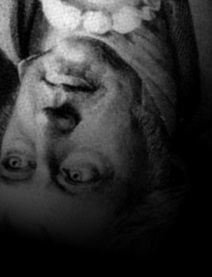
It is the year 1810, and Georg Wilhelm Friedrich Hegel has awoken from a bad dream. His hand still shaking, garbed in his nightgown as was his habit, he puts pen to paper, describing in a letter to his friend Windischmann what he has seen:
[A] descent into dark regions where nothing reveals itself to be fixed, definite, and certain, where glimmerings of light flash everywhere but, flanked by abysses, are rather darkened in their brightness and led astray by the environment, casting false reflections far more than illumination. Each beginning of every path breaks off again and runs into the indefinite, loses itself, and wrests us away from our purpose and direction. From my own experience I know this mood of the soul, or rather of reason, which arises when it has finally made its way with interest and hunches into a chaos of phenomena and, though inwardly sure of the goal, has not yet worked through them to clarity, and a detailed grasp of the whole.
Cut. The vulnerability of the transcendent is the age-old nightmare of philosophy in the West. If the world, as Plato held, is the shadow of Ideas, then why should the world not cast its own shadow back? Conversing with the Neoplatonists at the twilight of ancient paganism, those philosophers who held that the material world arises as emanations from the One, the Gnostics saw all too well what the Platonic system entailed. It was a portal between the transcendent and the transcended, between the material and the ideal. If the pure light of the One shone through in one direction, any number of horrors must be able to flow back in the other. Thus the Apocryphon of John: ‘When light mixed with darkness, it made the darkness shine. When darkness mixed with light, it dimmed the light and became neither light nor darkness…’
The same text gives the name of the sovereign of this realm of gloom: Yaldabaoth. For the Gnostics, the creation of Yaldabaoth solved the problem of the transcendent Janus gate; Yaldabaoth, assuming the position of the Platonic demiurge or material creator, served also as the vessel for the horrors of the material world, an insane and terrible demigod whose very insanity protected the One. In a passage that has survived only in fragments, the Gospel of Judas describes his creation: ‘And look, from the cloud there appeared a [?] whose face flashed with fire and whose appearance was defiled with blood. His name was Nebro, which means “rebel”; others call him Yaldabaoth.’ The Apocryphon of John snidely identifies him with the God of the Israelites, noting, we may imagine, with an ironic smirk:
[Yaldabaoth] said to them: I am a jealous god and there is no other god beside me. … [But] if there were no other god, of whom would he be jealous?
This may seem like so much mysticism, and indeed the image of Yaldabaoth was lost at the hands of Christianity and the later advent of enlightened philosophy. Yet it is precisely this figure of Yaldabaoth that haunted Hegel, precisely this ‘darkness mixing with light’ that he described in his letter, the false god, lights ‘darkened in their brightness’ dissolving into glimmering formlessness. Yaldabaoth, explicitly, was the sovereign of Chaos. To dispel the gloom, Hegel constructs a golem of cold rationality. A famous footnote to the Philosophy of Right proclaims that the Idea, which is the State, ‘marches through history’. Its gait is the dialectic; it takes strides of negation and negation of negation, one foot in the particular, the other in the universal. We are led to believe that it is organic, smoothly balanced.
This, as Adorno pointed out in his essay on the ‘Aspects of Hegel’s Philosophy’, is a lie. The golem is a monster, lumbering lopsidedly. Its particularity is shrivelled, its universality swollen to grotesque proportions. What is deviant, what is heterodox, what is unreasonable: all of these are crushed beneath its limp. And the darkness is infecting it. The State proclaims, ‘there is no other god besides me’, even as its face is defiled with blood and fire. We should not be surprised, despite liberal-Hegelian attempts to separate the two, that it was, historically, Hegelians who were embedded across the doctrinal spine of fascism: Giovanni Gentile, the official philosopher of Italian fascism, a celebrated Hegelian academic; the Kyoto School during the Pacific War, formulating the concept of the co-prosperity sphere on explicitly Hegelian lines; Carl Schmitt in Germany, defending the need for ‘qualitative totalitarianism’ by appeals to Hegelian political cosmos.
This monstrosity is not a triviality. It would be one thing if Hegel were simply another priest of the nineteenth-century bourgeois state, a purveyor of platitudes about civility. Instead, Hegel formulates the problem ‘ruthlessly’, neurotically, making the ‘antinomy more intelligible than ever before’. He points to something beyond himself. Adorno: ‘In unresolved opposition to the pathos of humanism, Hegel explicitly and implicitly orders human beings, as those who perform socially necessary labour, to subject themselves to an alien necessity. … Hegel disdains the illusion of freedom, the individual who, in the midst of universal unfreedom, behaves as though he were already free and universal.’
Hegel becomes Oedipus. Driven to despair by the onslaught of Yaldabaoth, he constructs as his defence the golem of the State-Idea. But it is precisely through this golem that the hitherto mythical Yaldabaoth enters into history; like Hegel himself, who was in the habit of wearing a nightgown over his formal clothes, the golem is dripping with infectious darkness. We may only wonder whether Negarestani’s recuperation of German Idealism will not perform the same function.
If Yaldabaoth is the figure of gloom, the infection of the pure light of the One, this says nothing of the purity of the darkness itself. Indeed, in the Gnostic universe, it is only light that needs to worry about a descent into the gloom. The cold darkness of nihil, by contrast, is deep and unending. Yaldabaoth’s realm is merely the portal: there are stranger things that lurk in the abysses, noumena, as Kant termed them, but noumena that move beneath their cloak of imperception. The defeat of Yaldabaoth comes not, as Hegel thought then, from the luminary State that dissolves the ‘chaos of phenomena’, the triumphant Idea. Yaldabaoth dies in the fangs of the noumena themselves.
Advertisements Share this:




